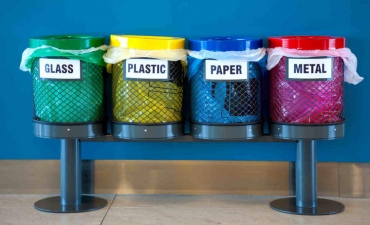Proper waste management is much needed in today’s life. Due to lack of proper management, the places are becoming dirty. Thus, there is immediate need to introduce well-planned ways that can help to manage the waste. A plan can initiate a clean and fresh environment.
If you are having a business that generates large amounts of waste then it is important to take proper care of the wastes to avoid any kind of legal issues. In this article, we have mentioned some of the ways that improve your ways of managing waste.
Types of Waste-
Controlled waste– These are under the legislative control for its handling or disposing issues. There are two main parts of these wastes are the controlled and uncontrolled.
The controlled waste can be further divided into commercial, household, clinical, industrial and other hazardous wastes. The uncontrolled wastes are explosive wastes, agricultural waste, and radioactive wastes. The controlled wastes need special attention in terms of the license for proper transferring, disposing and treatment.
Industrial waste- These wastes are produced from the industrial activities. These include all the materials that are no longer of any use to the company for manufacturing goods and items. All factories, mills, and mining procedures are responsible for generating this kind of wastes.
Commercial waste- these are the wastes that are the outcomes of the places that are mainly used for trade, business, sport, recreation, entertainment, and education. These wastes do not include household, industrial and agricultural.
Household wastes- These are the solid wastes that come from the garbage and rubbish. These are solely the wastes of the homes and apartments. Hazardous wastes may also be a part of it. Garden wastes and street wastes come under this category.
The Ways by which they can be Controlled-
Monitoring
By this process, one has to identify the needs of management and the scope where proper management can be achieved. The output of wastes will be much less. With regular checking, a customer can see the improved results.
Collection
It is the work of the logistical organization to see that the dustbins do not overfill and are cleaned from time to time. The correct size of the bin for a particular place is to be installed for waste collection. For different types of wastes different coloured or stickered bins should be used.
Transportation
Transporting the wastes is very important. If the waste bins are having wheels then it will be easier for the companies to transfer the wastes from the work residence of the customers to the landfills or processing plants.
Processing
The recyclables are treated in the processing plants. The raw materials hence produced are sent to the factories. The non-recyclable wastes are sent directly to the landfills. The more hazardous and liquid wastes are treated so that they become less harmful.
Thus, if one is looking for managing the industrial waste then they can follow the steps to achieve properly managed wastes contributing to the fresher environment.

